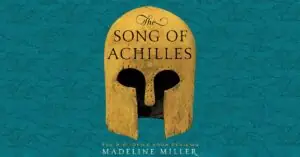“They Both Die At The End” by Adam Silvera is a poignant, speculative fiction novel published in 2017. The story is set in a near-future version of our world where a company named Death-Cast can predict the day of a person’s death and makes a courtesy call to inform them at midnight. The narrative follows two teenage boys, Mateo Torrez and Rufus Emeterio, who receive their end-of-day calls on the same day and connect through an app called Last Friend, designed to help people live their last day to the fullest.

✅ AI Essay Writer ✅ AI Detector ✅ Plagchecker ✅ Paraphraser
✅ Summarizer ✅ Citation Generator

Overview
The novel explores themes of mortality, friendship, love, and making the most of one’s time. As Mateo and Rufus embark on their final journey, they reflect on their past, confront their fears, and open up to the beauty of human connection. Through their shared experiences, they find meaning and transformation on their last day alive.
Plot Summary
Mateo Torrez: A shy, introverted 18-year-old who has lived a sheltered life, plagued by the fear of death and the outside world. After receiving his call from Death-Cast, he decides to step out of his comfort zone and truly live for the first time, despite knowing it’s his last day.
Rufus Emeterio: A 17-year-old with a more outgoing and bold personality, Rufus is spending his End Day reeling from the sudden death of his entire family. After getting into a fight at his ex-girlfriend’s place, he turns to the Last Friend app to find someone to spend his final hours with.
Their Last Day: Mateo and Rufus meet through the Last Friend app and decide to spend the day together, embarking on a series of adventures that range from small joys to profound self-discoveries. They visit Mateo’s comatose father, explore the city, and even crash a funeral to celebrate life. Throughout the day, their bond deepens into a profound and life-changing friendship.
As the story progresses, the inevitability of their fate looms large, yet their connection allows them to open up and embrace their vulnerabilities, fears, and dreams. They live a lifetime’s worth of experiences in a single day, changing each other for the better.
The Conclusion: True to the title, both characters meet their end by the close of the book—Mateo dies in an accident while saving a girl from being hit by a car, and Rufus dies shortly after, overwhelmed by grief and a twist of fate. However, their story emphasizes the impact they had on each other’s lives, demonstrating the value of every moment and the power of human connection.

Insights
“They Both Die At The End” challenges readers to consider the significance of every day and the importance of living authentically and connecting deeply with others. Silvera’s narrative also touches on how technology can influence our understanding of life and death, and the ways we seek companionship and meaning in the face of mortality.
Similar Books
If you found “They Both Die At The End” compelling, you might also enjoy:
- “The Fault in Our Stars” by John Green – A novel about two teens with cancer finding love and meaning amidst their struggles with mortality.
- “Before I Fall” by Lauren Oliver – A story of a girl who relives her last day over and over, exploring the changes she can make in herself and the lives around her.
- “If I Stay” by Gayle Forman – A novel that delves into the choice between life and death through the experience of a young girl in a coma.
- “On the Come Up” by Angie Thomas – While not about death, this novel explores themes of self-expression and resilience in the face of life’s challenges.
Through Mateo and Rufus’s story, “They Both Die At The End” offers a moving reflection on life’s fragility and the importance of living fully, leaving a lasting impact on readers to cherish their relationships and make the most of their time.
Follow us on Reddit for more insights and updates.





Comments (0)
Welcome to A*Help comments!
We’re all about debate and discussion at A*Help.
We value the diverse opinions of users, so you may find points of view that you don’t agree with. And that’s cool. However, there are certain things we’re not OK with: attempts to manipulate our data in any way, for example, or the posting of discriminative, offensive, hateful, or disparaging material.